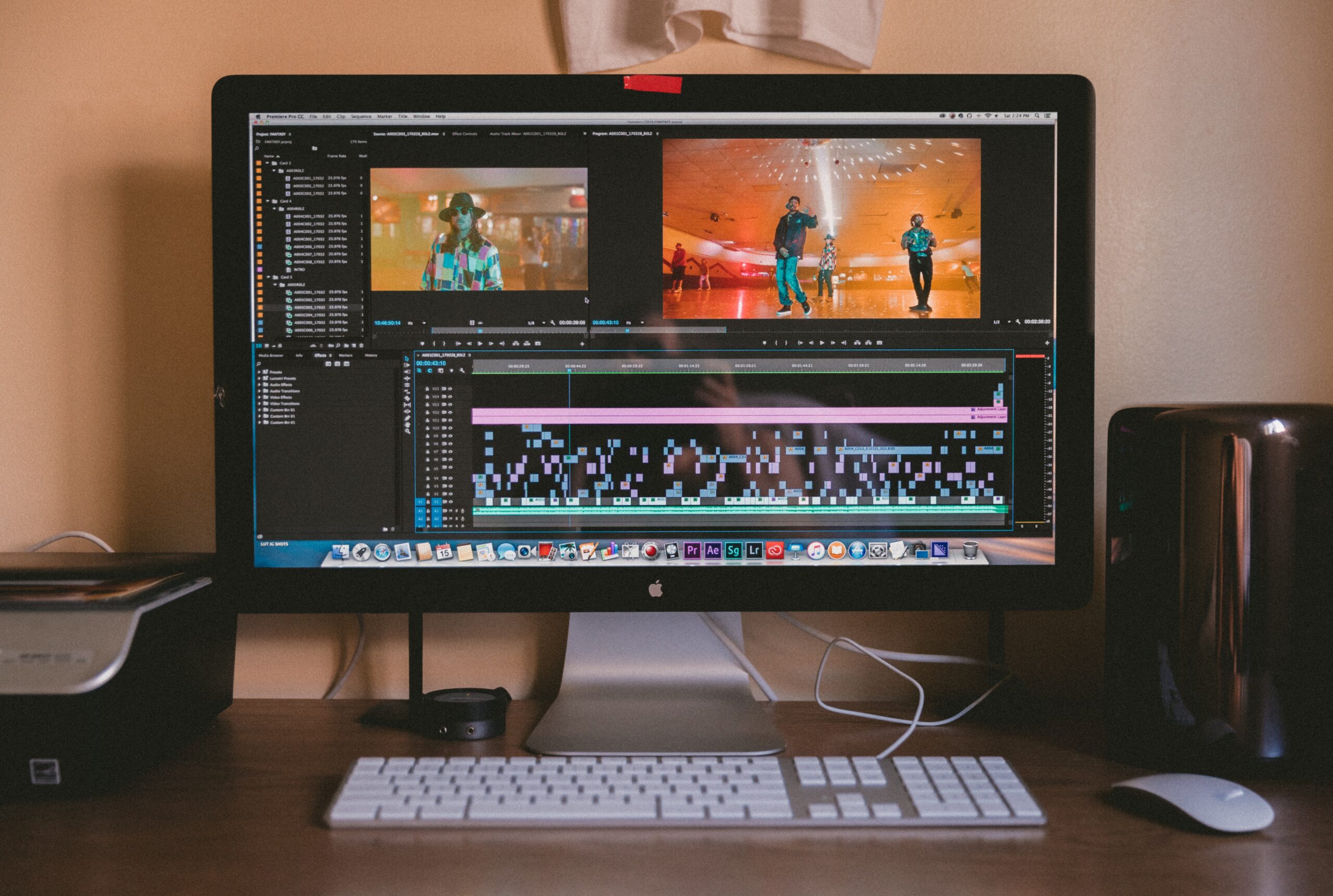
Do you roll your eyes whenever someone says ‘consistency’ is all you need to thrive on TikTok and Instagram?
They probably don’t know how hard it is to film a video, edit, brand, and make your video content ready. And you have to do that every day to be consistent.
Well, the good thing is you can actually do all that easily with video automation tools.
That’s why this article is your jackpot.
Here, I’ll be showing you the five most useful video automation tools for content creators.
But before we go into that proper, what are video automation tools?
What are Video Automation tools
Video automation tools are tools that make the process of filming, editing, and publishing video content easier and less manual.
These tools are powered by advanced technology to simplify the various tasks involved in video content creation.
Video automation tools are easy to use, intuitive, and often have free trials or demos where users can understand and try out the software.
You can use them for your filming and editing to produce engaging, captivating content for your audience.
The importance of video automation tools is increasing with the increasing need for video content.
72% of internet users would rather watch video content rather than read blocks of text.
In fact, social media platforms like Instagram and TikTok are primarily populated by video content and other visual forms of content creation.
Content creators who are interested in building their personal brands using video content should therefore use video automation tools to make their creation process a breeze.
I have rounded up some of the best tools from my personal experience and the opinions of other content creators on Instagram and TikTok.
Let’s get into it.
Five Most Useful Video Automation Tools for Content Creators
The tools mentioned below will help you reach a wider audience with your video content.
They will also enhance the quality of your videos and simplify your process.
1.) HappyScribe for captions
HappyScribe is an audio-to-text converter that uses AI and the expertise of language professionals to offer subtitles and transcription services. There’s a voice-to-text and video-to-text feature that enhances the functionality.
HappyScribe helps you generate captions for your video and repurpose your podcast or audio content into a voiceover for an infographic video.
Anthony Hardee of Trustpilot testified to the efficiency of HappyScribe.
“Using Happy Scribe is easy and seamless. The accuracy of its transcription engine is quite high, and from the time of submission of an MP3 file to the time of getting back a transcribed Word document is under 10 minutes, which is quick.”
HappyScribe makes your video easy to understand and relate to. Accessibility in content creation is a way to reach a larger audience and that’s the aim of every content creator. That’s why you need HappyScribe.
Key Features:
- Limitless file uploads
- Import from other platforms
- Collaboration workspaces
- Integrations with apps like Zapier and YouTube.
Pricing: There is a free-forever plan that offers most of the features but in limited minutes. The basic plan starts at $10 per month.
2.) Adobe for editing
Adobe has always been known for its stellar editing prowess. Adobe leaves your video with the highest quality, clear visuals, and many editing variants.
With Adobe Video Editor, you can crop videos, snip, animate, and use customizable templates. Background editing is also a great feature of Adobe Editor especially if you usually have a lot of background noise.
You can add icons, elements, images, and even animations. You can include soundtracks to make your video more engaging.
One peculiar feature is that Adobe video editor is perfect for creators with little to no editing experience.
Key Features
- In-browser editor
- Adobe Express templates
- Adobe stock images
- Mobile app
- File format conversions
Pricing: There’s a free-forever plan for creators. The premium plan starts at $9.99 per month.
3.) Animaker for templates
It is quite stressful to make similar videos from scratch again and again. Just like infographic templates, Animaker provides video templates for content creators who have a specific video outlook.
You can create templates to reuse for your videos. This saves you the stress and time of having to create videos from scratch every time. It allows you to adopt a cohesive personal brand approach to your video content creation.
Animaker also helps you produce animations and live-action videos using AI. It also has basic video editing features like cropping, video effects, and green screen.
You can create videos using text that tailors the video to your exact description.
Key Features
- Live video editing
- GIF making
- Customizable templates
- Character builder
- Auto Lip sync
Pricing: There’s a free plan and the basic plan starts at $12.5 per month.
4.) Canva for infographics
Canva is a free tool that allows users to create captivating designs from scratch or using pre-created templates.
Canva is important for its many functions as regards graphics, video, and image editing. If you make videos that include lots of infographics, Canva is a great tool to use. It automates your graphic templates and allows you to use them to create videos.
With Canva, including stock videos, images, templates, and even uploading photos from your device is one click away.
Be inspired by watching sample videos from other brands or creators.
Canva also has a magic studio that consists of AI-powered tools. You can generate copy in your brand voice, and use Magic edit to edit your photos.
Key Features
- Image enhancer
- Video trimmer and resize
- Curved text generator
- Photo editor
- Video GIF
Pricing: There’s a Canva free plan that works perfectly for users. However, the Canva Pro plan starts at about $3 per month.
5.) Loom for screen recordings
Loom is one tool that everyone has been missing out on. Loom is perfect if you create tutorial videos, feedback videos, informational, or educational content.
Loom allows you to share your screen and share videos in a very seamless way. You can create regular videos as well with the Loom app.
Loom has automation for almost every part of the video creation process. From auto summaries to auto titles, auto chapters, auto tasks, and even silence removal.
With Loom, you can also record on any device including mobile devices using their mobile app.
Collaboration is easy and seamless and you can share your video using a Loom link or even download the video.
Key Features
- Customizable video templates
- Video trimming and stitching
- Video library
- Interactive videos
- Share and embed videos in Google workspaces
Pricing: There’s a free plan for individual use. The business plan starts at $12.50 per creator per month.
Now that you know the most useful video automation tools, let’s see some best practices for producing high-quality, engaging videos.
Best practices for Video content creation
1.) Use good tools
Using good filming tools makes your video stand out from the very beginning. You should get lights, a sound system and a good camera. However, you don’t have to have all of these before you start.
Start out with what you have at the moment and work towards improving your tools.
2.) Research your target audience
You should make sure to identify the kind of videos your target audience is more drawn to.
Do they want a short video? Do they want a long one? Do they want an entertaining or educational video?
You can ask them what kind of videos they want to see from you. You can also look out for the videos where you have the most engagement and try to replicate them.
3.) Plan and schedule your videos
To be consistent with posting video content, planning and scheduling are key factors. Create a content plan that includes the subject matter of each video, the intent of the video, the video’s big idea, and the script.
When you’re done filming the video, schedule it using social media scheduling tools like Buffer or Later so you can post consistently even on days when you’re busy.
4.) Write a script
While it is convenient to just freestyle your videos, sometimes, it is important to write a video script you can follow.
A script gives you creative direction and allows you to stay with the important points of your video rather than blabbing about.
Writing a script doesn’t mean you must follow the script to the letter. You can still include your peculiar style and phrases but you’re guided in the entire video process.
5.) Promote your video content
Promoting your video content begins with studying the algorithm to note the best posting times, the hashtags that work, and the kind of videos that perform better.
Once you’ve tailored your video to meet the organic promotion requirements, the next stage is active promotion like:
- Sharing your videos on other social media platforms
- Encouraging your audience to share and save your video
- Including a Call-to-action (CTA) so that you can achieve the goal of the video
There’s also the part of sponsored video content where you promote your videos by paid promotion on the social media platform you use.
Now that we’re done, it’s time to get started.
Start using the best video automation tools
If you’ve gotten to this point, then you must be on your way to making your video content creation easy and efficient.
Tools like HappyScribe, Canva, and Animaker are designed to help you do this.
Make sure to get these tools, explore their best features, and start making captivating video content for your audience.




